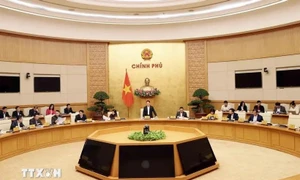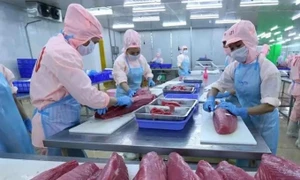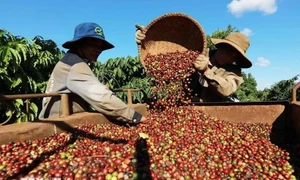
Statistics of the Ministry of Transport showed that railway holds a market share of less than 1%, inland waterway less than 20%, while the remainder of the transport sector is road and aviation.
However, after years of rapid growth road and air transport are facing issues of sustainability.
According to Luong Duyen Thong from the Department for Roads of Vietnam, the number of contract transport vehicles has increased by 70% since 2020. However, some are found not to comply with operational regulations, affecting the tax collection and investment efficiencies, while breaking the planning of transport routes and increasing the risk for traffic congestion and accidents.
The aviation industry of Vietnam has been facing a serious shortage of aircrafts from the beginning of this year due to an engine recall of Pratt 7 Whitney for their PW1100 engines on A321Neo aircraft operated by Vietnam Airlines and Vietjet. Together with rising fuel costs, the aviation industry is under significant pressure.
In that context, railway and waterway transport have significant opportunities to expand market share.
During the holidays on April 30 and May 1, the number of railway passengers increased dramatically. The railway has been making efforts to improve both facilities and service quality and has emerged as a viable alternative to expensive air travel. The railway industry is also looking to increase the amount of freight it carries through the participation in international transport networks.
Vietnam now has nine international freight stations including Lao Cai, Yen Vien, Hai Phong, Dong Dang, Giap Bat, Da Nang, Song Than, Kep and Cao Xa.
The Vietnam Institute of Transport Strategy and Development predicted that by 2030, the demand for international freight railway transport could reach 8.9 million tonnes per year. However, the current railway infrastructure can handle only 4-5 million tonnes per year, posing significant challenge for the industry in upgrading the system.
Deputy Minister of Transport Nguyen Danh Huy said that the focus will be on simplifying cargo loading and unloading procedures, reducing logistic costs and time, and increasing the number of international freight stations.
Waterway transport is also expanding its market share with the development of the ports system and logistics network.
According to the Vietnam Maritime Administration, cargo transported by way of water increased by 13.9% to 416 tonnes in the first two months of this year, among which, waterway and seaway transport saw the highest increasing rates of respectively 21% and 18.1% over the same period last year.
However, the transport ministry said that marine transport is under pressure from rising global tensions, climate change impacts and rising input costs.
The Vietnamese Government has approved the national plan for road, airport, seaport, waterway and railway systems through to 2030, aiming to increase transport connectivity, reduce logistic costs and improve the competitiveness of Vietnam’s goods. The ministry is also studying the investment policy for a North - South high-speed railway system.























